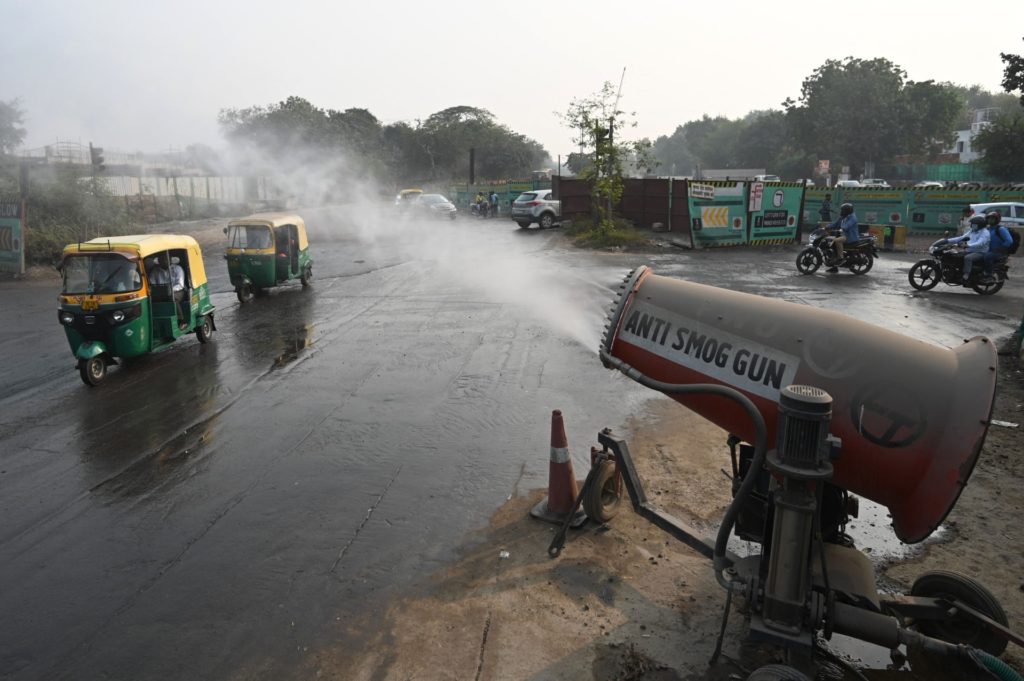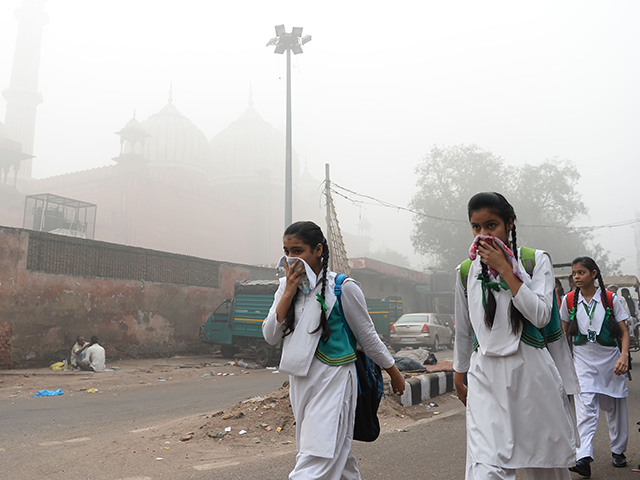The government of Delhi, India, on Monday ordered all schools in the city to close for a week in an effort to prevent children from exposure to “dangerously high” levels of air pollution across the national capital, Agence France-Press (AFP) reported.
“For a week from Monday [November 15] onwards, schools will be physically closed (they can continue virtually) so children don’t have to breathe polluted air,” Delhi Chief Minister Arvind Kejriwal told reporters on November 13.
“All schools, colleges, and educational institutes in Delhi to remain shut next week as pollution levels hit emergency level,” Delhi Deputy Chief Minister wrote in a Twitter statement posted November 13.
Delhi is the National Capital Territory (NCT) of India and is home to nearly 32 million people. The urban center is one of the most polluted cities in the world and regularly battles seasonal air pollution caused by agricultural fires as well as constant pollutants from factory and vehicle emissions.
Several factors contributed to Delhi’s most recent wave of toxic smog, including “families burning the remains of last year’s crop before the winter … [and] the launching of thousands of fireworks to celebrate the Indian festival of lights, Diwali,” Deutsche Welle reported on November 13. Diwali took place from November 4-5 this year.
![In this photo taken on November 6, 2019, farmers burn straw stubble after harvesting paddy crops in a field at a village near Sultanpur Lodhi. - Police have arrested more than 80 farmers in a northern Indian state for starting some of the fires blamed for the new pollution crisis in New Delhi and other cities, officials said November 7. (Photo by NARINDER NANU / AFP) / The erroneous mention[s] appearing in the metadata of this photo by NARINDER NANU has been modified in AFP systems in the following manner: [November 6] instead of [October 6]. Please immediately remove the erroneous mention[s] from all your online services and delete it (them) from your servers. If you have been authorized by AFP to distribute it (them) to third parties, please ensure that the same actions are carried out by them. Failure to promptly comply with these instructions will entail liability on your part for any continued or post notification usage. Therefore we thank you very much for all your attention and prompt action. We are sorry for the inconvenience this notification may cause and remain at your disposal for any further information you may require. (Photo by NARINDER NANU/AFP via Getty Images)](https://media.breitbart.com/media/2021/11/GettyImages-1180511752-1024x683.jpg)
In this photo taken on November 6, 2019, farmers burn straw stubble after harvesting paddy crops in a field at a village near Sultanpur Lodhi. (Photo by NARINDER NANU/AFP via Getty Images)
“We are getting 12-14 patients daily in the emergency room, mostly at night, when the symptoms cause disturbed sleep and panic,” Dr. Suranjit Chatterjee from Delhi’s Apollo Hospitals told the Times of India on November 13.

Commuters make their way amid heavy smog conditions pass an anti-smog gun spraying water to curb air pollution in New Delhi on November 16, 2021, as India’s capital air quality regularly plummets to the “severe” category in winter with levels of harmful particulates at dangerous levels. (Photo by MONEY SHARMA/AFP via Getty Images)
Delhi’s Air Quality Index (AQI), which measures harmful fine particulate matter (PM2.5) in the atmosphere, “hit 470-499 on a scale of 500” in recent days, Asian News International (ANI) reported on November 15.
“Particulate matter contains microscopic solids or liquid droplets that are so small that they can be inhaled and cause serious health problems,” according to the United States Environmental Protection Agency (EPA).
“Some particles less than 10 micrometers in diameter can get deep into your lungs and some may even get into your bloodstream,” the EPA writes. “Of these, particles less than 2.5 micrometers in diameter, also known as fine particles or PM2.5, pose the greatest risk to health.”
“Fine particles are also the main cause of reduced visibility (haze),” the U.S. government agency notes.

COMMENTS
Please let us know if you're having issues with commenting.